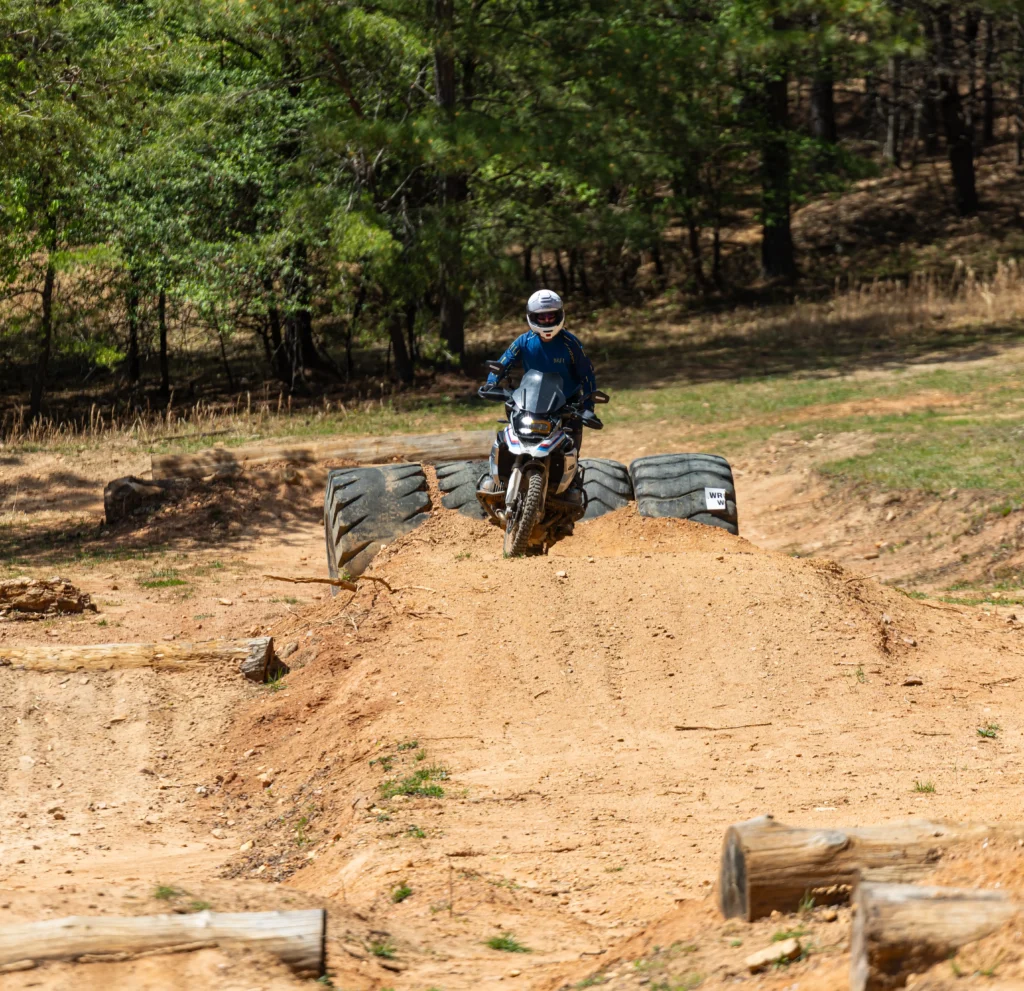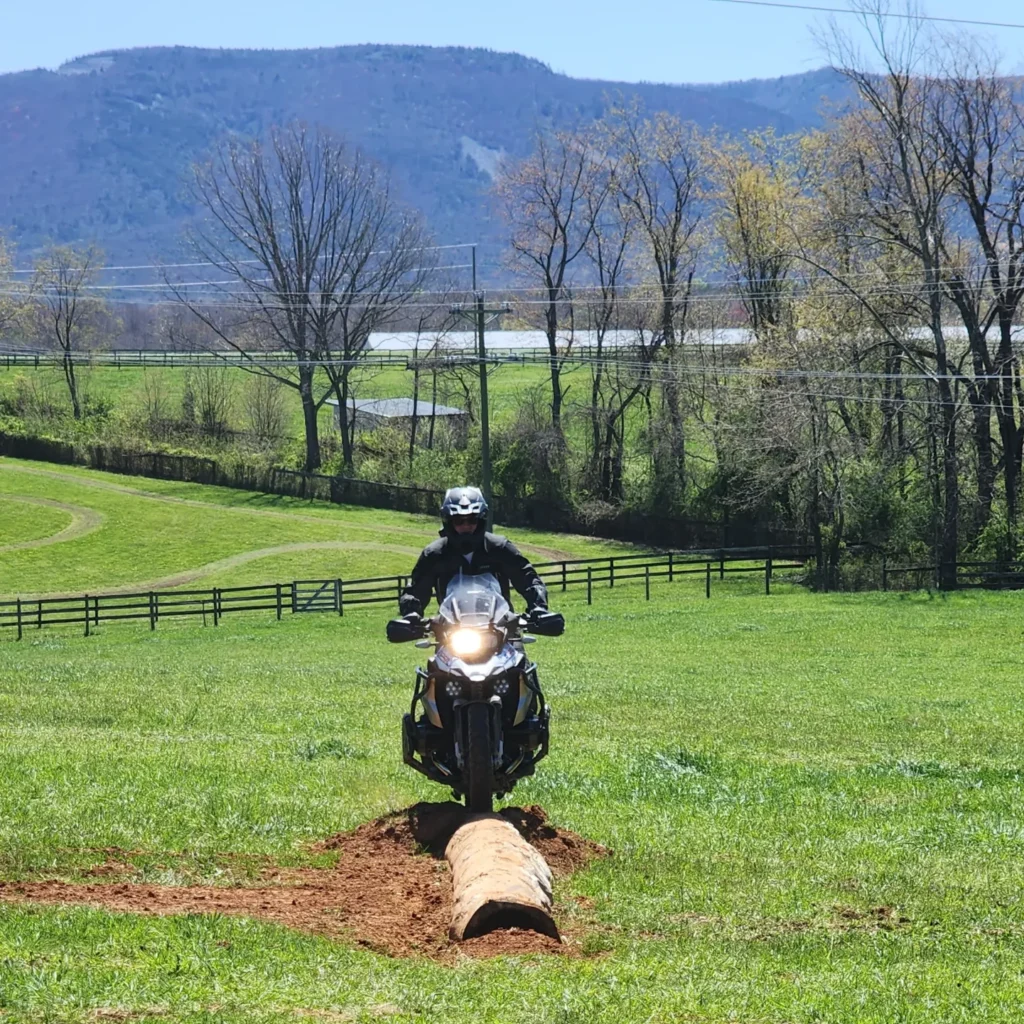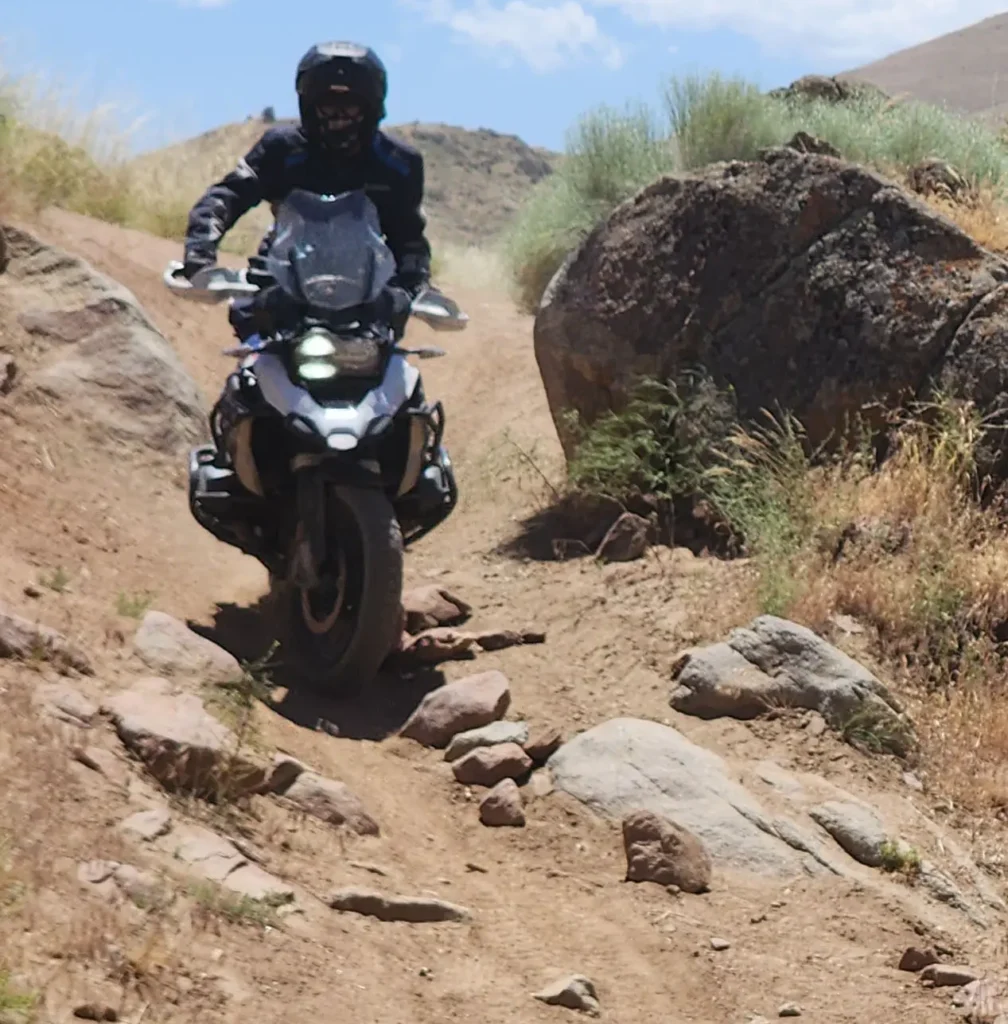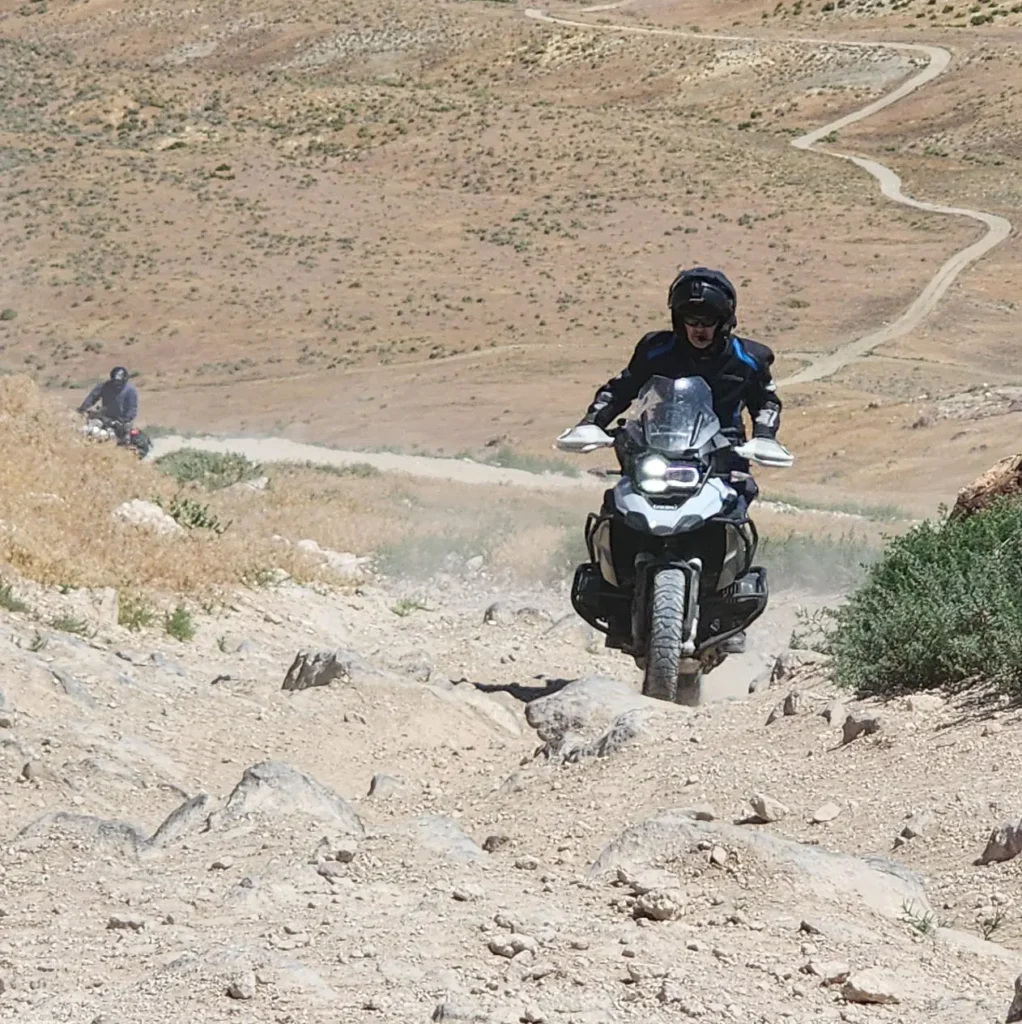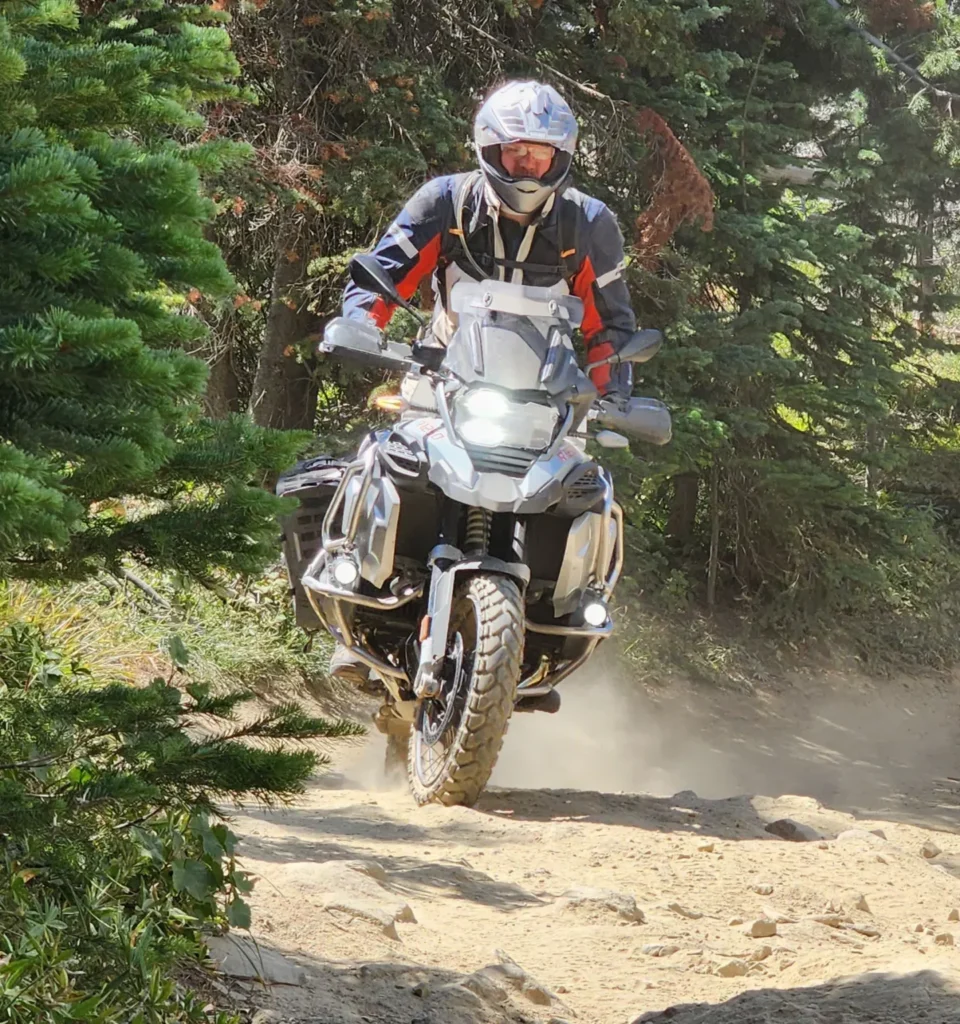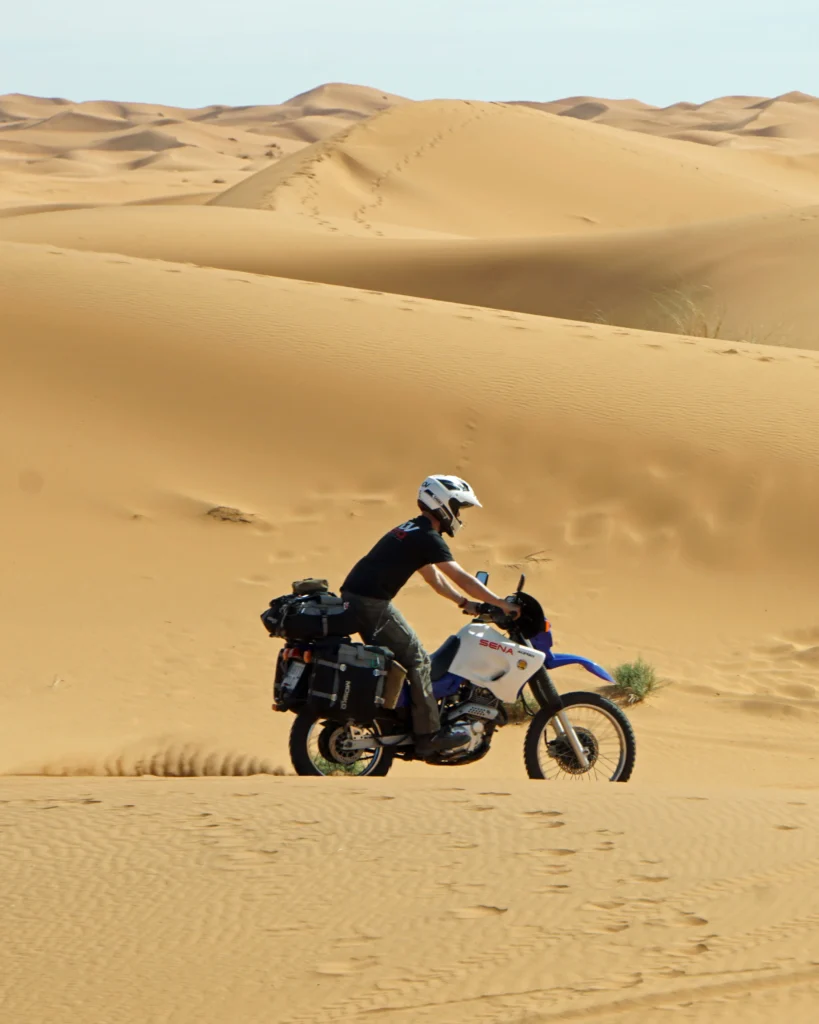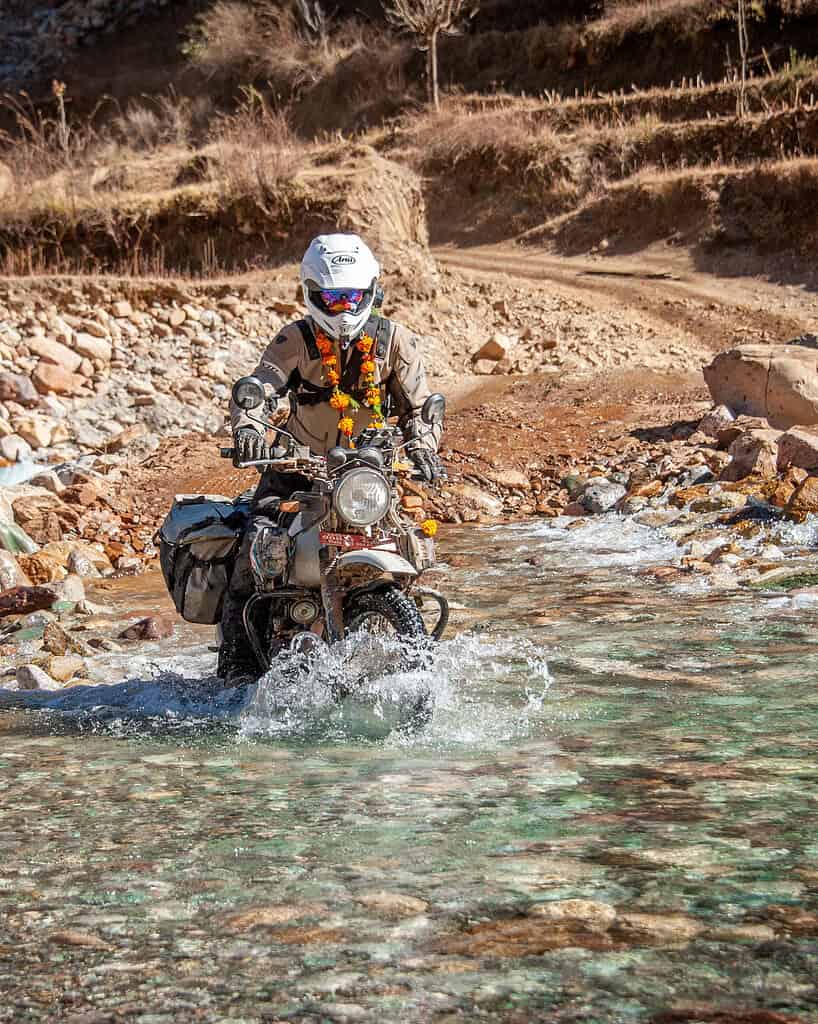Adventure Motorcycle Training
Why take ADV Motorcycle Training with us?
Taking ADV motorcycle training with Bret Tkacs offers unparalleled instruction for adventure riders seeking to build confidence and control with real-world skills on a wide variety of terrain. With a focus on safety, precision, and a deep understanding of how motorcycles function, Bret’s extensive experience teaching around the world emphasizes technique, precision, and mindset to help ADV riders prepare for their next adventure. Whether you’re new to ADV riding or refining advanced skills, Bret’s training provides a structured approach and hands-on practice to ride smarter, safer, and farther.
DON'T JUST TAKE IT FROM US... SEE WHAT PAST STUDENTS HAVE TO SAY:
If you’re deciding between ADV schools, take a look at this guide.
ADVENTURE TRAINING IN GEORGIA
APRIL 2-4, 2026
YOUNG HARRIS, GEORGIA:
Training occurs on 560 private acres originally designed for motocross riders. This will give you access to unique trails through the woods as well as some fun hill climbs, a gnarly 20 mile trail system that ranges from beginner to expert, log crossings, and a unique opportunity to learn how to separate rider from bike on four different motocross tracks.
TERRAIN:
Terrain varies from high traction dirt to wet, sticky clay. A lot of terrain is at an angle, giving you the best opportunity to practice on hills.

CHALLENGE TRAINING IN GEORGIA
APRIL 30 - MAY 2, 2026
YOUNG HARRIS, GEORGIA:
Training occurs on 560 private acres originally designed for motocross riders. This will give you access to unique trails through the woods as well as some rugged hill climbs, 20 miles of singletrack and doubletrack that will challenge the best rider, and the unique opportunity to learn on motocross and trials obstacles to build more precise control over your motorcycle.
TERRAIN:
Terrain varies from high traction dirt to wet, sticky clay. A lot of the terrain is at an angle, allowing for practice on hills.
ADVENTURE TRAINING IN VIRGINIA
APRIL 9 - 11, 2026
MAY 7 - 9, 2026
GREENVILLE, VIRGINIA:
At our premiere location, you will have the opportunity to enjoy our custom-made spaghetti trail – an off-camber looping trail system that will challenge your balance and slow-speed maneuvering skills. Several intimidating hills will challenge the mind of even the most accomplished ADV rider.
This location includes a homemade breakfast each morning, welcome and graduation dinners, as well as beautiful accommodations available on-site (separate purchase).
TERRAIN:
Doubletrack dirt trails with some singletrack options, slick off-camber grass, and hills that vary in steepness and difficulty.
ADVENTURE TRAINING IN idaho
2026 DATES TBD
NAMPA, IDAHO:
This is the most daring format we have ever offered! Nothing can simulate reality quite like reality itself. This is what makes this location a one-of-kind ADV training event. Idaho is the only location that utilizes a combination of training areas as well as on-trail learning. Each day you will travel and train in a new location.
TERRAIN:
Mostly hot desert, sand, sharp rocks, sand, steep loose hills, sand, long days… oh, and even more sand.
CHALLENGE TRAINING IN IDAHO
2026 DATES TBD
NAMPA, IDAHO:
This is the most daring training format we have ever offered, on steroids. Nothing can simulate reality the same as reality itself. This is what makes this location a one-of-kind ADV training event. Each day you will travel and train in a new location. Everything offered at our Idaho Adventure Training is doubled in difficulty for this Challenge Training.
TERRAIN:
Mostly hot desert, sand, sharp rocks, sand, steep loose hills, sand, long days… oh, and even more sand.
ADVENTURE TRAINING IN OREGON
JULY 10 - 12, 2025
REDMOND, OREGON
We are excited about the diversity of training obstacles available to us at this new location. Train on closed trails in a wooded desert terrain, open area training and purpose-built overland training course (hills, rocks, logs, and more).
TERRAIN:
Grass, gravel, rock, hills, desert terrain, ruts, logs.
ADVENTURE TRAINING IN WASHINGTON
JULY 17 - 19, 2025
CASHMERE, WASHINGTON:
Held alongside the Cascade County Rendezvous rally, you will be immersed into the rally events as well as customized training to achieve your off-road goals.
TERRAIN:
Private training field, custom-made obstacles to challenge all levels of riders, grass and dirt for slide turns, obstacles, grinding, forest service roads and more.
MOROCCO
ADVENTURE TOUR
NOVEMBER 8 - 23, 2025
DECEMBER 6 - 21, 2025
This small group adventure includes one day of training in advanced riding skills, mechanics, and navigation. This tour is unlike any other – we will have anchor point stops and the points in between is decided by the group. This is not a tour that adheres to a specific time schedule or route, the dynamic nature of this tour makes it YOUR tour.
Major stops along the route will include paces like the tanneries of Fes, the blue city of Chefchaouen, and ancient Roman ruins. You will be expected to service your bike each evening, find lodging, and navigate Moroccan traffic all while carrying your gear on your motorcycle.
Take a trip back to the origins of ADV riding and travel across international borders to a place you will never forget.
UPPER MUSTANG, NEPAL
ADVENTURE TOUR
NOVEMBER 8 - 23, 2025
This expedition goes into the secluded upper Mustang Region, nestled within the rain shadow of the highest mountain range in the world – the Himalaya. Only recently opened to foreigners with a Nepali guide, and protected by a restrictive access permit, this isolated region is the best-preserved remnant of Tibet.
Access to this region is not cheap, not easy and at times… not comfortable. However, the scenery at over 12000′, the undisturbed culture and the feeling of total isolation are completely worth the effort and sacrifice. Visit Lo Manthang, the forbidden city and the last piece of authentic Tibetan life.
WHAT ARE YOU LOOKING FOR?
Are you brand new to dirt?
Our ADV Training Camps are for riders who are looking to the gain the best skills and knowledge possible for riding large adventure motorcycles off-pavement and developing off-road skills in a systematic way. The ADV Camps are taught using the principals of andragogy while developing a comprehensive understanding of your motorcycle and how you can interact with it and the environment using physics.
All our locations offer a variety of terrain to practice on, depending on your ability and confidence level.
Watch this video to learn about the differences between our courses.
ARE YOU A VERY CONFIDENT BEGINNER OR LOOKING FOR ADVANCED SKILLS?
Our Challenge Training courses start with the same skills as the ADV training camps but uses more challenging terrain and advances at an accelerated pace. These courses use a fluid curriculum that allows you to practice in much more challenging environments than the ADV Camp and to take advantage of real-life scenarios as they are encountered.
Watch this video to learn about the differences between our courses.
Do you prefer learning on trail?
The Idaho training courses and international training/tours are for riders who prefer learning in small group, immersive real-world environments. If you have a craving for adventure and an open mind to a flexible learning style, this may be the perfect way to learn. We train you in real-time for challenges as they change in both type and difficulty. This immersive learning model is the ultimate way to become an adventure rider.
Are you trying to choose a school?
It seems like anyone who knows how to ride an ADV bike has probably started a training school. So how do you choose which training is the right one for you? There are a few warning signs you should be aware of – and it doesn’t have to do with cost. Click here to learn more.
